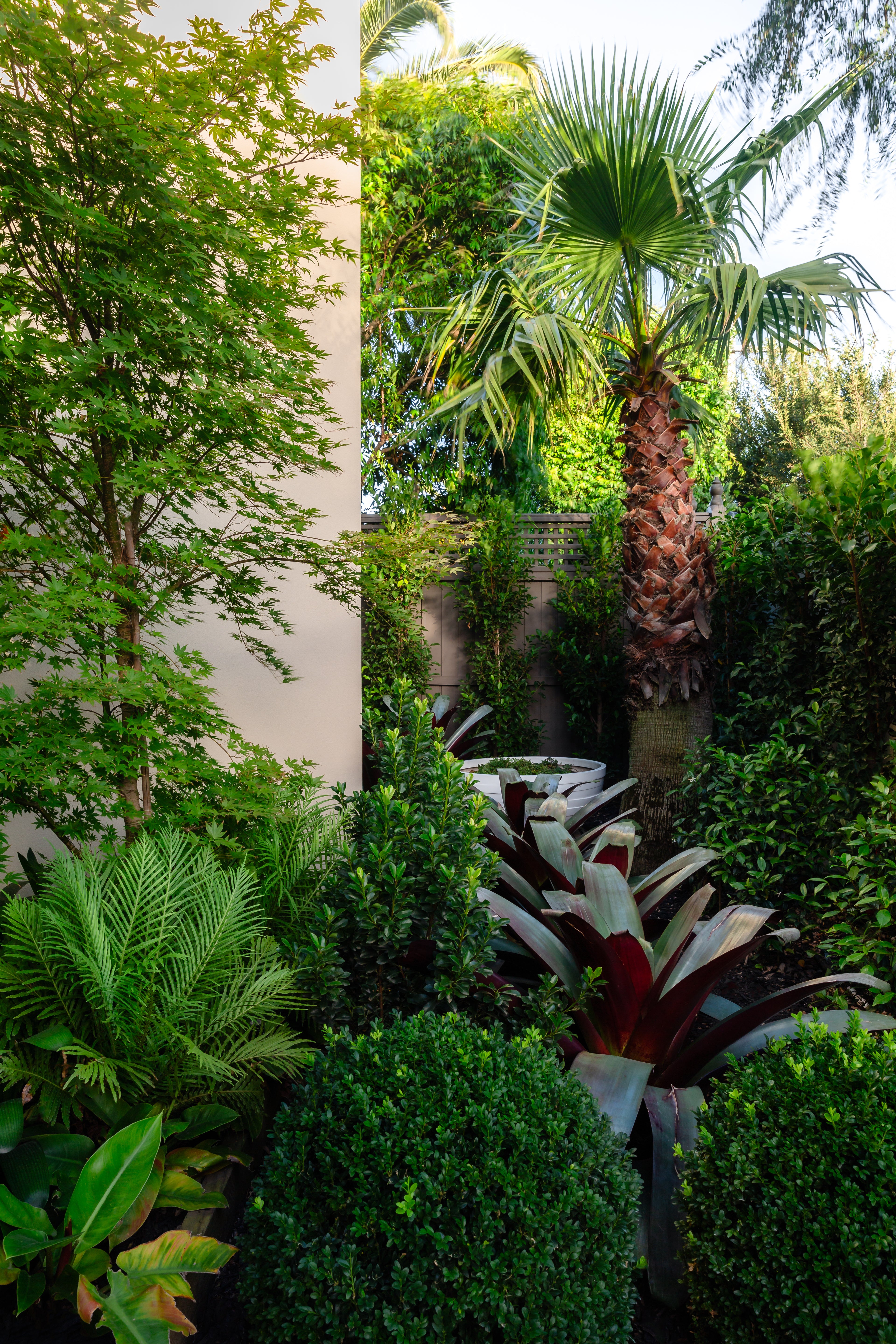If you want to transform your backyard into a fruitful paradise, growing fruit trees is a rewarding venture offering aesthetic beauty and delicious harvests. Whether you're a seasoned gardener or a complete beginner, selecting the right trees and providing them with proper care is crucial for success. In this guide, we'll explore how to plant, care for, and harvest from some of the most popular fruit trees: Citrus limon (Lemon Tree), Prunus persica 'May Grand', Malus domestica (Apple Tree), Ficus carica 'Black Genoa' Fig, and Punica granatum 'Wonderful' Pomegranate Tree.
Why Grow Fruit Trees in Your Backyard?
Fruit trees are more than just a source of fresh produce; they add character and value to your garden. By growing your fruit, you can enjoy the satisfaction of harvesting sun-ripened fruits at their peak flavor, free from pesticides and chemicals. Additionally, fruit trees offer seasonal beauty, from spring blossoms to autumn harvests, making them a dynamic addition to any high-end garden.
Selecting the Right Fruit Trees
When selecting fruit trees for your backyard, consider the following factors:
- Climate: Ensure the tree you choose is well-suited to your local climate. Some trees, like the Citrus limon (Lemon Tree), thrive in warmer regions, while others, such as the Malus domestica (Apple Tree), prefer cooler climates.
- Space: Consider the tree's mature size and how much space it will need to grow without overcrowding other plants.
- Soil: Most fruit trees prefer well-drained soil rich in organic matter. Correct soil preparation is essential to ensure healthy tree growth.
- Maintenance: Different trees have varying maintenance needs. While some may require regular pruning and pest control, others require less maintenance.
Let’s dive into the needs and benefits of the top five fruit trees that can enhance your backyard.
Citrus limon (Lemon Tree)
The Citrus limon (Lemon Tree) is a delightful evergreen that brings a burst of color to your garden and provides a steady supply of tangy lemons. Known for its glossy green leaves and fragrant white flowers, this tree is a must-have for any garden aiming to blend beauty with functionality.
Key Facts:
- Mature Height: 3-6 meters
- Mature Width: 2-4 meters
- Best Uses: Feature tree, container planting, adding a Mediterranean vibe to gardens
- Leaf Appearance: Glossy, dark green leaves
- Rate of Growth: Moderate
- Tolerates: Mild frost, drought (once established)

Why It’s Perfect to Add to Your Garden
The Lemon Tree is an evergreen that provides year-round greenery and vibrant yellow fruit that can be harvested multiple times yearly. It's ideal for smaller gardens or containers, making it versatile and easy to manage. The aromatic blossoms are beautiful and attract beneficial pollinators like bees. Whether you’re zesting a lemon for a gourmet dish or squeezing fresh juice, the Citrus limon adds a touch of luxury and functionality to your backyard.
Prunus persica 'May Grand'
Prunus persica 'May Grand', commonly known as the 'May Grand' Nectarine, is a highly valued variety for its early ripening, large fruit size, and exceptional sweetness. This deciduous tree is a must-have for any home orchard or as a feature tree in a garden landscape.
Key Facts:
- Mature Height: Typically 12-15 feet (about 3.6-4.6 meters)
- Mature Width: 10-15 feet (about 3-4.5 meters)
- Foliage: Lanceolate, green leaves that provide a lush backdrop to the fruit and flowers.
- Fruit: Features large, freestone, yellow-fleshed nectarines with a smooth, vibrant skin. The fruit is known for its sweetness and excellent flavor, ripening typically in early to mid-summer.
- Uses: Excellent for fresh eating, desserts, and canning due to its sweet flavor and appealing texture.
- Tolerates: Adaptable to a range of soil types, provided they are well-drained.
- Maintenance: Moderate; requires annual pruning to maintain health and promote fruit production.
- Water Requirement: Regular watering is necessary, especially during fruiting season, to ensure optimal fruit development.

Why It’s Perfect to Add to Your Garden
The Prunus persica 'May Grand' is a favorite for its juicy, sweet fruit and stunning spring blossoms. Its fast growth rate means you’ll enjoy fresh peaches sooner than expected. This tree thrives in a sunny spot, where it can soak up the warmth needed to produce abundant fruit. With proper pruning and care, it can also be grown as an espalier, saving space while adding a structured, elegant look to your garden.
Malus domestica (Apple Tree)
The Malus domestica (Apple Tree) is a versatile and reliable choice for any garden. With its wide variety of cultivars, from tart to sweet, this deciduous tree is a staple in many backyards. Known for its stunning spring blossoms and crisp, flavorful fruit, it offers both beauty and bounty.
Key Facts:
- Mature Height: 4-10 meters (depending on the variety)
- Mature Width: 3-5 meters
- Best Uses: Feature tree, espalier, fruit production
- Leaf Appearance: Oval, dark green leaves
- Rate of Growth: Moderate
- Tolerates: Cool climates, frost

Why It’s Perfect to Add to Your Garden
The Malus domestica (Apple Tree) is a quintessential fruit tree known for its adaptability and the wide range of apple varieties available. Whether you prefer tart or sweet apples, there’s a variety for every palate. The tree’s spring blossoms are a sight to behold, and the fruit can be stored for long periods, providing fresh apples well into the winter. Apple trees are also excellent for pollinators, making your garden a buzzing hub of activity.
Ficus carica 'Black Genoa' Fig
For those who appreciate the exotic, the Ficus carica 'Black Genoa' Fig offers a touch of the Mediterranean right in your backyard. This fast-growing tree produces abundant, sweet figs perfect for fresh eating or preserving. Its large, lobed leaves add a dramatic touch to any garden.
Key Facts:
- Mature Height: 3-5 meters
- Mature Width: 3-4 meters
- Best Uses: Feature tree, container planting, fruit production
- Leaf Appearance: Large, lobed leaves with a coarse texture
- Rate of Growth: Fast
- Tolerates: Drought, poor soil

Why It’s Perfect to Add to Your Garden
The Ficus carica 'Black Genoa' Fig is a vigorous grower known for its adaptability to various soil conditions. This tree produces dark purple figs with rich, sweet flesh, perfect for fresh eating, drying, or preserving. Its large, architectural leaves add a tropical feel to your garden, while its compact size makes it suitable for smaller spaces or container gardening. With minimal care, you can enjoy bountiful harvests of figs from late summer into autumn.
Punica granatum 'Wonderful' Pomegranate Tree
The Punica granatum 'Wonderful' Pomegranate Tree is a striking addition to any garden, with its vibrant red flowers and glossy fruit. Revered for its health benefits, the pomegranate offers more than just beauty—its fruits are packed with antioxidants, making it a valuable and nutritious addition to your backyard orchard.
Key Facts:
- Mature Height: 3-4 meters
- Mature Width: 2-3 meters
- Best Uses: Feature tree, hedge, fruit production
- Leaf Appearance: Narrow, glossy green leaves
- Rate of Growth: Moderate
- Tolerates: Heat, drought, slightly acidic to neutral soil

Why It’s Perfect to Add to Your Garden
The Punica granatum 'Wonderful' Pomegranate Tree is as attractive as it is productive. It offers striking red flowers that turn into glossy, ruby-red fruits. Pomegranates are prized for their health benefits, packed with antioxidants and vitamins. This tree thrives in hot, dry climates and can also be grown as a hedge or trained as a small tree, making it a versatile addition to any garden. Its low maintenance and resilience make it an excellent choice for those who want beauty and function without too much effort.
Planting Tips for Fruit Trees
- Site Selection: Choose a sunny location with well-drained soil. Most fruit trees need at least 6-8 hours of direct sunlight to produce abundant fruit.
- Soil Preparation: Before planting, amend the soil with organic compost to improve fertility and drainage. Avoid waterlogged areas, as most fruit trees are susceptible to root rot.
- Planting Depth: Plant the tree so the graft union (a noticeable bulge on the trunk) is above the soil line. This prevents the scion from taking root and ensures proper tree growth.
- Watering: Water newly planted trees deeply and regularly to help them establish a strong root system. Once established, most fruit trees prefer infrequent but deep watering.
- Mulching: Apply a layer of organic mulch around the tree's base to retain moisture, suppress weeds, and regulate soil temperature. Keep the mulch away from the trunk to prevent rot.
- Fertilization: In the early spring, use a balanced, slow-release fertilizer to promote healthy growth. Avoid excessive nitrogen, leading to lush foliage but poor fruit production.
Caring for Your Fruit Trees
- Pruning: Regular pruning is essential for fruit trees. It helps shape the tree, removes dead or diseased wood, and encourages fruiting. Prune in late winter or early spring before new growth starts.
- Pest and Disease Control: Monitor your trees regularly for signs of pests or diseases. Use organic or chemical treatments as necessary to keep your trees healthy.
- Harvesting: Harvest fruit when it's fully ripe for the best flavor. Each type of fruit has its indicators of ripeness, so be sure to research or test when the time is right.
Frequently Asked Questions
Q: How long does it take for a fruit tree to bear fruit?
Fruit trees generally take 3-5 years to produce fruit, depending on the species and growing conditions.
Q: Can I grow fruit trees in containers?
Many fruit trees, such as Citrus limon (Lemon Tree) and Ficus carica 'Black Genoa' Fig, thrive in containers, especially in small spaces.
Q: How often should I water my fruit trees?
Newly planted trees should be watered deeply and regularly. Once established, water deeply every 1-2 weeks, depending on the weather and soil conditions.
Growing fruit trees in your backyard is a rewarding experience that combines the joy of gardening with the pleasure of fresh, homegrown fruit. By carefully selecting the right trees and providing them with proper care, you can enjoy a bountiful harvest season after season. Happy gardening!










